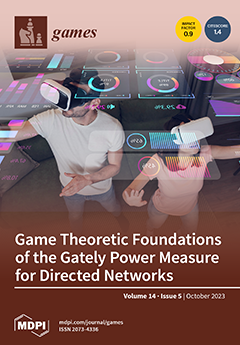In a previous paper, we considered several models of the parlor game
baccara chemin de fer, including Model B2 (a
matrix game) and Model B3 (a
matrix game), both of which depend on
[...] Read more.
In a previous paper, we considered several models of the parlor game
baccara chemin de fer, including Model B2 (a
matrix game) and Model B3 (a
matrix game), both of which depend on a positive-integer parameter
d, the number of decks. The key to solving the game under Model B2 was what we called Foster’s algorithm, which applies to additive
matrix games. Here “additive” means that the payoffs are additive in the
n binary choices that comprise a player II pure strategy. In the present paper, we consider analogous models of the casino game
baccara chemin de fer that take into account the
percent commission on Banker (player II) wins, where
. Thus, the game now depends not just on the discrete parameter
d but also on a continuous parameter
. Moreover, the game is no longer zero sum. To find all Nash equilibria under Model B2, we generalize Foster’s algorithm to additive
bimatrix games. We find that, with rare exceptions, the Nash equilibrium is unique. We also obtain a Nash equilibrium under Model B3, based on Model B2 results, but here we are unable to prove uniqueness.
Full article





